Major cities Singapore | ||
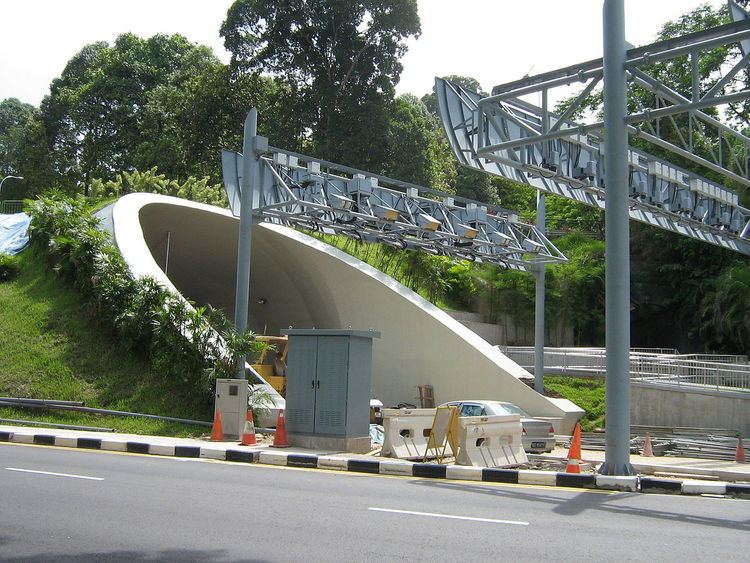 | ||
07000022 stamford rd to fort canning tunnel 20131023
Fort Canning Tunnel (Chinese: 福康宁隧道; pinyin: Fúkāngníng Suìdào), abbreviated as FCT, is a vehicular tunnel in the Central Area of Singapore.
Contents
- 07000022 stamford rd to fort canning tunnel 20131023
- Stamford rd fort canning tunnel 2013 02 27
- Location
- Features
- Rationale
- Construction
- Facilitating construction
- Construction method
- References
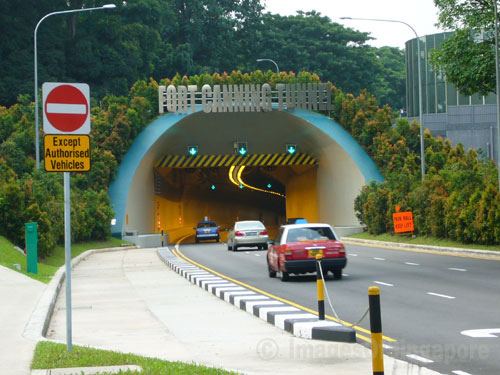
Besides the utilization of relatively new engineering techniques, special care was taken to minimize impact on the environment of the surrounding Fort Canning during construction. The original contract for the FCT project was awarded to Sato Kogyo for S$25.95 million.
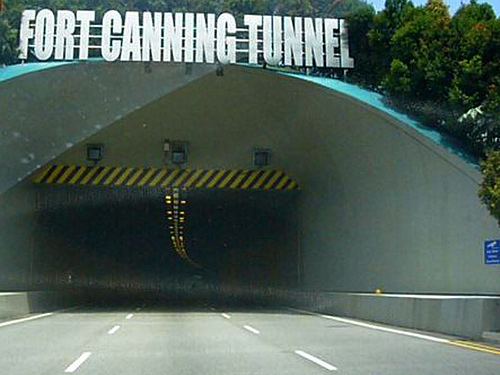
The FCT was one of four Technical Tours organized by the Land Transport Authority and Association of Consulting Engineers on September 29, 2006 during the World Roads Conference 2006 held in Singapore.

Stamford rd fort canning tunnel 2013 02 27
Location

The FCT cuts under Fort Canning Park and an access road, Canning Rise. The entrance to the tunnel is roughly located on the land housing the Old National Library Building, at the junction of Stamford Road, Armenian Street and Queen Street. It brings traffic to Penang Road, providing direct access to the Orchard area. The stretch of Stamford Road between Queen Street and Bencoolen Street will also be permanently realigned in front of the National Museum of Singapore after the FCT's construction. The bedrock of the area was the so-called Fort Canning Boulder Bed, a stiff clay with huge embedded boulders.
Features
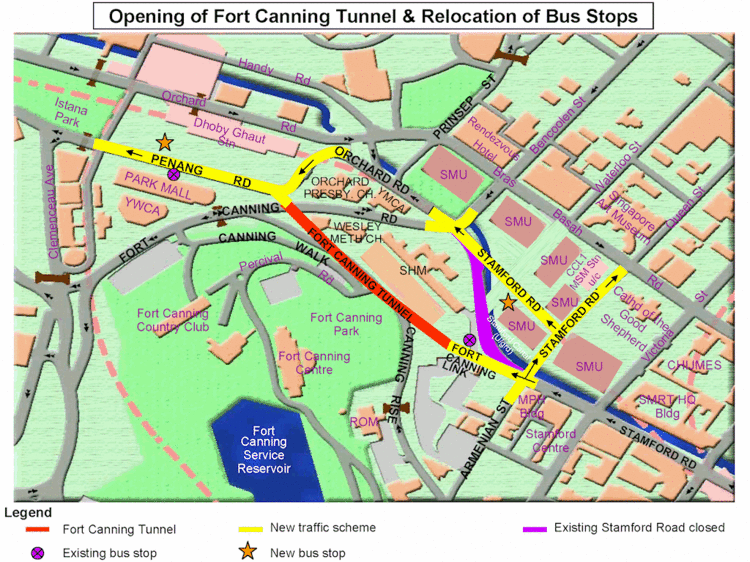
The tunnel is part of a 500 m uni-directional three-lane new road. The FCT itself has a length of 350 m, and will include an Electronic Road Pricing (ERP) gantry to "close up the Orchard Road ERP cordon". The FCT incorporates cables to ensure continued mobile phone and radio coverage. Furthermore, ventilation jets were installed in case of traffic congestion or fire. The tunnel has no fire exits, due to the relatively short distance. National Fire Protection Association standards require emergency escapes in tunnels every 300 m. 4 closed-circuit TV cameras are installed, 2 of which are inside the tunnel.
Rationale
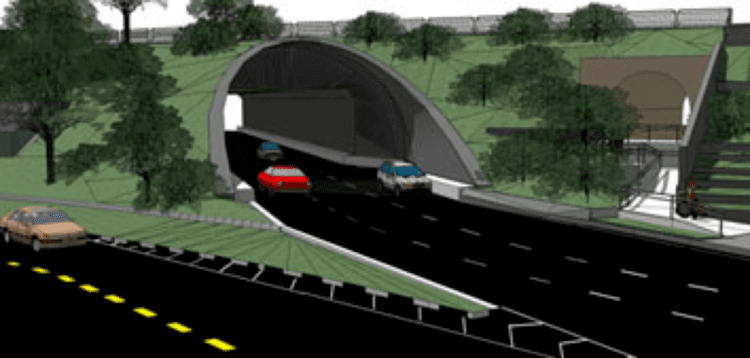
The FCT project was based on the Urban Redevelopment Authority's plans for the Museum Planning Area. Over 3,000 vehicles pass through Stamford Road every hour during peak periods. With the old traffic scheme, motorists stopped at 2 traffic lights at slow speeds, which made the area prone to congestion. In view of increased traffic from new developments in Marina Centre and Marina South to the Orchard shopping area, design plans for the tunnel were drawn up to allow motorists to bypass several traffic junctions. The tunnel cuts journey times from 5 minutes to as fast as 18 seconds.
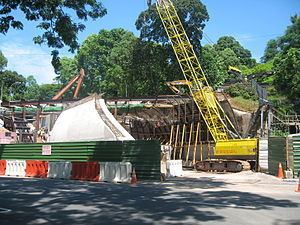
The construction of the FCT would form a grid pattern, resulting in more efficient land use for the adjacent Singapore Management University (SMU) campus. The realignment of Stamford Road would also make the journey to Bras Basah and Little India smoother. By cutting through Fort Canning Hill, the historical and environmental significance of the area would still be preserved.
Construction
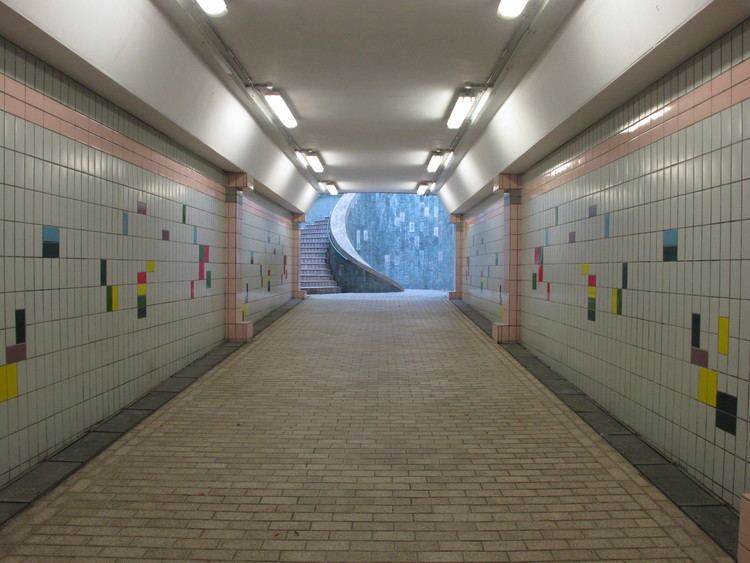
Construction of the FCT started in October 2003 and the tunnel was opened on 16 January 2007, despite original plans for completion by the end of 2006. The cost of the project was originally set at S$25.95 million, but this increased to S$34 million and eventually up to S$40 million. The tunnel was opened on January 16, 2007 at 6 a.m. SST.
Facilitating construction
To make way for the construction process, the old National Library was demolished and moved to its present location along Victoria Street. Sections of Canning Rise were closed twice during the course of construction. First, a stretch of road was closed for 3 months from July 1, 2004. After this, a different section was closed "to facilitate the reinstatement works" of the FCT from April 25, 2006 for a period of two months. However, this second closure was extended to August 31. In addition, a section of Stamford Road was temporarily redirected through the SMU campus near Prinsep Street during construction before its final realignment in front of the National Museum.
Their two bus stops were relocated. The diversion of Stamford Road had to put a bus stop near to the school (SMU), instead of near to National Museum of Singapore. In order not to conflict fast-moving traffic, the bus stop was moved to another side (Dhoby Ghaut MRT Station).
Construction method
180 m of the tunnel was constructed using an engineering technique known as the New Austrian Tunnelling method (NATM), which is similar to mining. The construction team used overlapping steel pipe roofs as support, with shotcrete lining, thick temporary invert, 2 layers of mesh, lattice girders and a watertight PVC membrane. The FCT is the first Singaporean road tunnel to use NATM, which has saved at least 22 trees in Fort Canning Park, including a 50-year-old tree. None of the designated 'Heritage Trees' were impacted by the FCT project. The remainder of the tunnel was constructed with the cheaper and more traditional cut-and-cover method.
A professional arboriculture company, Arborculture, was employed to assess the risk to flora in the area, as well as provide conservation and management strategies.
